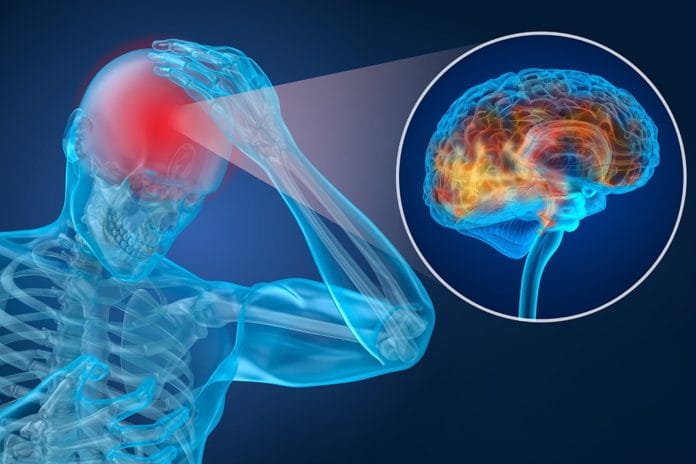Finnish researchers at the University of Tampere have some findings that show the presence of common oral bacteria in cerebral emboli for the first time. The article that documents their findings, “Oral Bacterial Signatures in Cerebral Thrombi of Patients With Acute Ischemic Stroke Treated With Thrombectomy,” focuses on the association between infection-causing oral bacteria and ischemic strokes. The Journal of the American Heart Association published the research article on June 4, 2019.
About Ischemic Strokes
An ischemic stroke occurs when the major blood vessels to the brain are blocked. Cerebral emboli are the blood clots that break free from a blood vessel blockage and travel through the bloodstream to the brain. Clot removal, whether with medication or by mechanical treatment such as an endovascular procedure or a thrombectomy, is the way an ischemic stroke is treated. In the United States, 87% of all strokes are ischemic, according to the Center for Disease Control.
When Good Oral Bacteria Turns Bad
It has been estimated that between 500 and 700 kinds of bacteria can live in the human mouth. Streptococcus species are common in the oral cavities of both healthy people and people who have periodontitis. Following trauma or dental procedures such as root canals or tooth extraction, oral bacteria can enter the bloodstream and remain there up to a few hours but do not normally cause problems for healthy individuals.
One particular species of Streptococcus, viridans streptococci, can transfer easily into the bloodstream after tooth extraction. This pathogen is also the most common cause of endocarditis, an infection of the inner lining and valves of the heart. The Finnish researchers discovered that the bacteria had become trapped in atherosclerotic plaques in the relatively short time that the bacteria remain in the bloodstream of the patients in the study.
As a result of the bacteria’s entrapment, the plaques became fragile, causing them to rupture. The ruptured plaques caused blood clots to form, which then traveled through the bloodstream. A blockage of blood flow to the brain occurred, triggering strokes in the patients.
Why This Study Matters
The relationship between poor oral health due to chronic infection and certain kinds of cardiovascular diseases, such as heart attack and cerebral aneurysm, has already been documented by the research group at the University of Tampere. The group has been studying a possible connection between bacterial infections and cardiovascular disease for more than ten years. The results from this group’s research over this period seem to suggest that bacteria might have a role in the complications that develop from atherosclerosis.
The Finnish group’s stroke study is significant for two reasons. First, research prior to the Finnish study did not have conclusive evidence of an association between infection caused by poor oral health and ischemic stroke. The second reason is that researchers at Tampere have identified a specific pathogen that may be connected with an increased incidence of strokes. Identifying another possible risk factor for stroke is critical in making a case for preventative measures.
Details about the Finnish Study
Researchers examined the thrombus aspirates of 75 stroke patients who underwent emergency thrombectomies for treatment. Thrombus aspirates are the blood clots removed from the major arteries that supply the brain during surgery. DNA amplification and comparison testing showed that 84% of the patients had bacterial DNA in their blood clots. Among them, 79% of the patients had aspirates that contained the bacterial DNA that causes endodontic infection, namely the viridans streptococci group.
The researchers posit that there are several possible ways that viridans streptococci can enter atherosclerotic plaques before they rupture:
- Via circulating macrophages that eventually accumulate in the accumulate in plaques
- By activating platelets that contribute to triggering a stroke
- Through the stimulation of endothelial cells that produce cytokines that are part of the pathogenetic pathway of atherosclerosis
- By simply drifting through the bloodstream and entering the small blood vessels that support the walls of larger blood vessels, where plaques may be located.
One More Convincing Reason to Maintain Good Dental Hygiene
Risk factors such as high cholesterol, high blood pressure, smoking, increasing age, and diabetes, among others, can increase the likelihood of a stroke. A person who has these risk factors should be monitored and treated by medical personnel to help prevent strokes as well as other cardiovascular diseases.
Good oral hygiene is another preventative measure that can ward off a number of health problems, as most dental professionals will confirm. But, in the case of this study, the takeaway is that regular dental care should be a primary consideration in the prevention of ischemic stroke.
Before you leave, check out the Today’s RDH self-study CE courses. All courses are peer-reviewed and non-sponsored to focus solely on pure education. Click here now.










